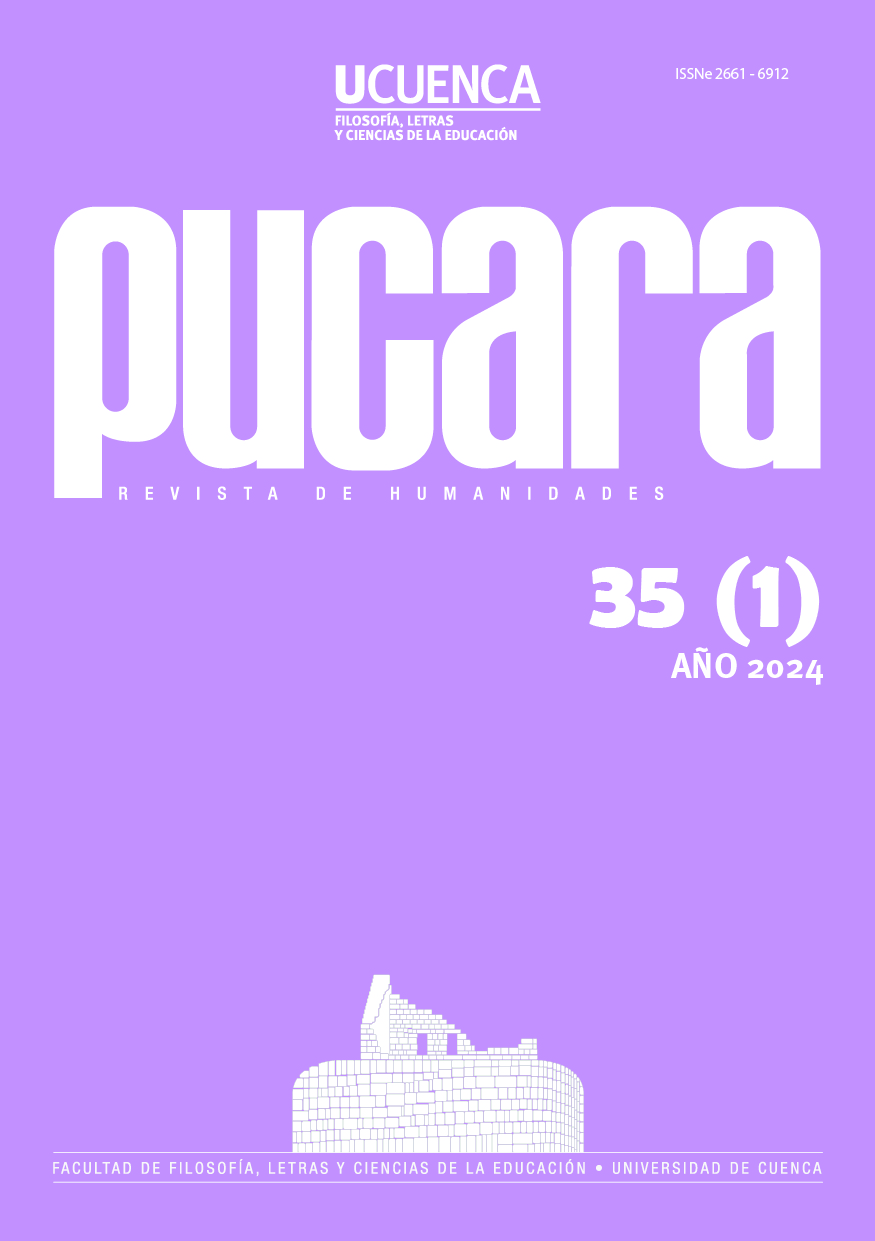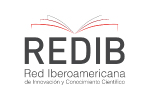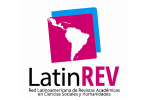Search for the truth in Twice June: hermeneutical reading from biopolitics
DOI:
https://doi.org/10.18537/puc.35.01.03Keywords:
True, Dos veces junio, hermeneutics, biopoliticsAbstract
This article studies the search for truth in the novel Dos veces junio, by the Argentine writer Kohan, from a hermeneutical reading that uses Foucault's theory of biopolitics and anatomopolitical to consider the relationships established between the characters. It investigates the author's narrative procedures and the diegetic relationships of the characters that lead to that search for truth. Literary resources are described through narratology and hermeneutics, in a dialogue with the concepts of biopower, biopolitics and anatomopolitical. The results identify that the protagonists seek the truth in verbal discourse, that is, in the oral and written word; and the mechanism to obtain it is the symbolic and physical domination of the body. The form of the text is fragmented and numbered; from this it is concluded that this exhibition in literary fragments operates as a representation of memory, which is a path to the truth, but a fragile and fictional.
Downloads
References
Althusser, L. (1974). Ideología y Aparatos Ideológicos de Estado. Oveja Negra.
Basile, T. (2019). Infancias: La narrativa argentina de HIJOS. Eduvim.
Colautti, S. (2013). Dos veces junio, de Martín Kohan. Escrito sobre los cuerpos. Letralia. https://letralia.com/288/articulo13.htm
Corbin, A., Courtine, J. y Viarello, G. (2006). Las mutaciones de la mirada. El siglo XX, Historia del Cuerpo. Vol. III. Taurus.
Chuquimantari, M. (2015). Lo dicho y lo no dicho en Dos veces junio: complejización de la prosa. IX Congreso Internacional Orbis
Tertius de Teoría y Crítica Literaria. Universidad Nacional de La Plata. http://citclot.fahce.unlp.edu.ar/ix-congreso/actas2015/a021.pdf
Díaz, P. (2020). Contando la muerte y la desaparición de personas en contexto migratorio. Sociología y Tecnociencia, 10(1), 1-24.
Duperron, C. (2016). El desplazamiento en Dos veces junio o la construcción de un lenguaje crítico de la memoria. Amerika, 15,
http://journals.openedition.org/amerika/7692; https://doi.org/10.4000/amerika.7692
Foucault, M. (1996). La vida de los hombres infames. Altamira.
Foucault, M. (2006). Historia de la sexualidad. La voluntad del saber. Siglo XXI.
Gatti, G. (2017). Desapariciones: usos locales, circulaciones globales. Siglo del Hombre.
Genette, G. (1989). Figuras III. Lumen.
Jauss, H. R. (1987). Estética de la recepción. Arco Libros.
Jauss, H. R. (2015). Caminos de la comprensión (Vol. 185). Antonio Machado Libros.
Kohan, M. (2011). Dos veces junio. Random House Mondadori.
Lombardo, M. (2018). El cuerpo del archivo: Función, testimonio y la responsabilidad de su orden: apuntes sobre la Insensatez y dos
veces junio. Peraules Clau, 452(18), 31-52
López, R. (2007). La culpa colectiva. Un análisis de Dos veces junio, de Martín Kohan. Cuadernos del Sur. Letras, 37,
Mandolessi, S. (2020). Formas de (desafección): Dos veces junio de Martín Kohan. Aletheia, 11(21), 1-1.
Martínez, J. (2018). El cuerpo como nueva superficie de inscripción de la política: Michael Foucault y la biopolítica. Sociología y
tecnociencia Revista digital de sociología del sistema tecnocientífico, 8(1), 27-42.
Muñoz, C. (2020). Memoria y olvido: narrar el horror: Dos novelas de Martín Kohan. (Tesis de maestría) Universidad de Buenos Aires.
Regueiro, S. (2013). Apropiación de niños, familias y justicia. Prohistoria Ediciones.
Turner, B. (1984). El cuerpo y la sociedad. Exploraciones en teoría social. Fondo de Cultura Económica.
Villalta, C. (2012). Entregas y secuestros. El rol del Estado en la apropiación de niños. Editores del Puerto S.R.L
Published
How to Cite
Issue
Section
License
Copyright (c) 2024 Estalin Calle Herrera

This work is licensed under a Creative Commons Attribution-NonCommercial-ShareAlike 4.0 International License.
Copyright © Autors.

You are free to:
 |
Share — copy and redistribute the material in any medium or format |
 |
Adapt — remix, transform, and build upon the material for any purpose, even commercially. |
Under the following conditions:
 |
Attribution — You must give appropriate credit, provide a link to the licence, and indicate if changes were made. You may do so in any reasonable manner, but not in any way that suggests the licenser endorses you or your use. |
| NonCommercial — You may not use the material for commercial purposes. | |
| ShareAlike — If you remix, transform, or build upon the material, you must distribute your contributions under the same license as the original. |
| No additional restrictions — You may not apply legal terms or technological measures that legally restrict others from doing anything the licence permits. |












